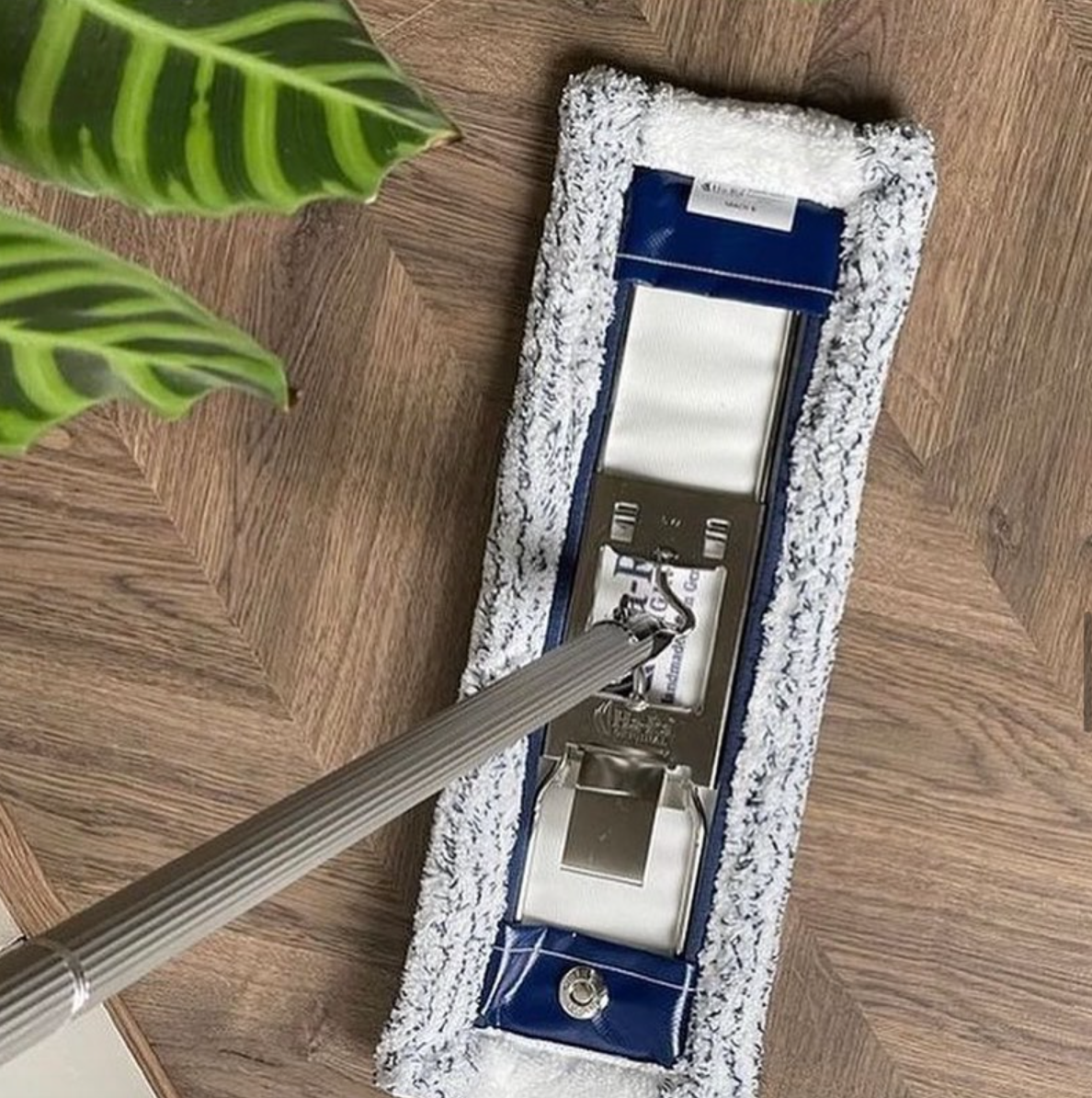The dilemma is, how can you clean a kitchen without utilising harsh chemicals that can lurk about the kitchen, particularly under the sink?
Did you realise that every household cleaning product has the potential to harm your health? Toxic fumes from cleaning agents have been demonstrated in studies to have an effect on your health when inhaled. Acid-based oven cleansers, for example, might cause skin allergies if you do not wear rubber gloves. Some substances have the potential to induce allergic responses. Cleaning with a harsh detergent or chemical can induce leaching through your skin and into your blood circulation, which we do numerous times a day in our kitchen.As a result of chemical warfare, 700,000 new cleaning chemicals have been produced and introduced into the world since World War II. Cleaning chemicals are still manufactured for various purposes, with thousands of these substances on grocery shelves.
If you go back in time to the Stone Age, they just had water, sand, and grass to clean with. Obviously, things have changed during the twentieth century, but more chemicals are not the answer. We must adjust our way of thinking to account for our environment and climate change. The younger generation is already looking for better home cleaning options that are more sustainable and environmentally friendly. When it comes to cleaning your kitchen naturally, the following home goods are a fantastic place to start:
Baking soda is an excellent cleanser.
Lemon acid has natural antimicrobial properties.
Vinegar can be used to disinfect and clean.
People used to chuckle at the idea of re-inventing the wheel for cleaning because most technologies did a good job. There was a belief that there was little reason to modify things. The growth in allergies and asthma, however, has caused some to reassess this decision. We would still be living in caves if every inventor thought that. Even the most basic things can be improved. This is why the German developer created a chemical-free cleaning system that uses a variety of fibres to cover all aspects of cleaning. This is why Ha-Ra has been and will continue to be the Original in chemical-free cleaning. Many companies tried to imitate his idea, but no one was able to match its commercial-grade quality.
He invented a new manufacturing procedure that resulted in cleaning fibres that require only water to clean. The fibres were made into fabric and then made into cleaning cloths, gloves, and floor pads.
This was the beginning of a new chemical-free cleaning technology that is still smashing endurance records today. Who would have guessed that with only fibres and water, you could eliminate grease and filth in a single step? Hans Raab created a line of fibres for cleaning oil and filth. There is also a one-of-a-kind glass cleaning fibre that eliminates buildup and residue from glass or mirrors. This fibre cleaning method needs to be of extremely high quality for both household and commercial use. As a result, all products are still made in Germany.The Kitchen Cleaning Kit is made up of six separate products that work in tandem through physical-mechanical action. Rather than sprinkling disinfectants and cleaning agents on a surface, the Kitchen Cleaning Kit removes filth and bacteria from the surface without the use of abrasive chemicals.
Customers frequently come to us when they are unable to clean their bench tops, shower screens, or floors. Unfortunately, these surfaces are frequently degraded by previous chemical use. The surface layer of glass, for example, can be shattered, making hard water deposits far more difficult to clean in the long run. You will never have to deal with these concerns if you use chemical-free cleaning solutions in the first place.
What tools are required to clean a kitchen using a Kitchen Cleaning Kit?
Cleaning your kitchen using a variety of micro, nano, and mono fibres that come in glove or cloth shape is the finest alternative. Nanofibers are fibres having sizes less than 100 nanometers. In the fabric industry, the categorisation is frequently extended to encompass fibres with a diameter of 1,000 nm, which is finer than a micro fibre; thus, these strands have been carefully treated to agitate filth out of surface indentations and absorb into the fibre. The same as a scrubbing brush.These strong fibres push water between dirt particles and the surface to which they cling. Cooking creates a lot of buildup, grease, and fat, whether it's on or under your range hood, splash back from your stove, grease in your oven, or spills in your refrigerator. The Kitchen Cleaning Kit will address all of these cleaning difficulties in your kitchen. The Kitchen Cleaning Kit has six products made of three types of fibres: microfiber, mechanical fibres, and nanofibers.
Australian Laboratories tests have proven that these fibres deliver a deep clean while leaving no bacteria or filth behind.
This method kills any microorganisms that are present on a polluted surface. As a result, many hospital sterilisers use the same technology as the Kitchen Cleaning Kit. The fibres were tested with the Ultra Cleaning Cloth and water, followed by the Star Polishing Cloth, which collected the loosened filth brought to the surface and sucked it into the Star Polishing Cloth. Instead of splattering a solution over a surface, these fibres simply remove dirt and grease particles. They also clean a surface of microorganisms. The studies revealed that the Ultra Cleaning Cloth had low carryover, and the bacteria and organisms remained contained in the cloth and were quickly removed when rinsed in water. The outcome of these studies is that germs cannot thrive on a completely smear-free and clean surface since they require water and nutrients to do so.Cleaning a kitchen without using chemicals is an easy task.
The first step is to make a shift and remove all harsh chemicals from your house or kitchen. This will help you make the decision to stop using chemicals. The next step is to plan a thorough cleaning to eliminate all of the chemical buildup on your surfaces. Grime or grease can frequently become trapped beneath a coating of sticky spray residue. Because there is no sticky residue left to gather fine dust and dirt particles, the surface will stay cleaned for longer. The water you use for cleaning can also be utilised on the garden because it is non-toxic to the environment.A Mach 6 Cleaning Glove is included with the Kitchen Cleaning Kit. This cloth is a mild degreaser for areas like 2-pack kitchen cabinets and glass. After that, you'd use a Star Polishing Cloth. These two cleaning chemicals will remove fine finger prints from any shining surface, including refrigerators, stainless steel, and glass.
It's worth noting that abrasive, solvent-based, or cream cleaners are frequently discouraged by kitchen suppliers. Simply add water to the Mach 6 Cleaning Glove and Star Polishing Cloth to clean the cabinet doors. If you have a lot of grease and fat buildup, try the Protective Formula Rollfix, which is 99% biodegradable and can be used as a degreaser. It also aids in fibre maintenance and acts as a wetting agent to keep water in the fibres.
When cleaning frying pans, simply use the Ultra Cleaning Glove and Rollfix. Wipe away the grease with the Ultra Cleaning Cloth, then dry the pan before using it again.
Rub the Rollfix over the cloth and rub the fibres together under warm flowing water before washing in the washing machine to remove the grease from the Ultra Cleaning Glove. The Mini Star Polishing Cloth can be used to wipe over and around toasters, coffee makers, jars, and benches to gather crumbs or give a light clean. The Mach 6 Cleaning Glove with water is the finest way to clean your bench tops. You would then dry off with Star Polishing Cloth for a steak-free result. The Ultra fibre from the Ultra Cleaning Glove may be needed for the range hood and splash back.We all seem to have a tendency of filling the sink with water, squirting in a large amount of detergent, donning gloves, and washing the dishes. This process can be greatly simplified by using a double-sided Dish Cloth, which cleans not just silverware and dishes but is also flexible enough to reach into plug holes and shine up sinks. It has an antimicrobial finish and incredibly fine bristles to handle any dish cleaning task.
What can I use to remove grease from the kitchen walls? Naturally, this is dependent on the surface. If you have smooth and shining surfaces, such as tiles or acrylic, use the Mach 6 Cleaning Glove followed by the Star Polishing Cloth for the greatest results. Fill the Cleaning Glove with dirt. With this Cleaning Glove, you can also remove finger marks off walls, doors, and light switches. When cleaning, always remember to clean from the top down.
Many people clean with vinegar, which can be good on certain surfaces. However, because vinegar is an acid, it can damage delicate surfaces such as natural bench tops or cabinets. Cooktops must be protected against damage. Avoid using materials that may scrape the surface of your induction cooktop in your cleaning routine to help prevent damage. When it comes to these surfaces, steel wool, heavy duty scrubbing brushes, abrasive powder cleansers, and chlorine bleach are not recommended.
The kitchen certainly includes not just our appliances and cupboards, but also floor surfaces. Fortunately, these items are also available as a Floor Cleaning Pad through the Floor Cleaning Express. This Floor Mop can clean everything from wood to tiles to vinyl to stone.







